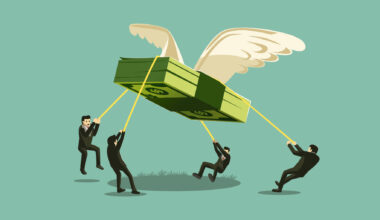Despite the understandably negative takes on the strategic and economic situation in Ukraine by most commentators, this is starting to look like it could be a major strategic win for the West and, further, could act as a long-term stimulative catalyst to economic development for the world.
History may look back at 2022 as the year Russia awoke a sleeping giant; the democratic West, whose technological leadership and prowess is already evident on the ground in Ukraine, with NATO’s entry-level equipment (basic short range anti-tank and anti-air missiles) halting the Russian war machine in its tracks, even after Russia spent the last 20 years investing heavily in updating and expanding its military.
The last Cold War delivered transformative technologies to the world, via government investment in technology. Modern computers, the internet, mobile communications, even many of the materials we use every day in our homes and workplaces, these were innovations powered by the necessity of the times and drove strong economic growth during and after the conflict.
A renewed focus by the West on investment in frontier technologies, born of a necessity to maintain its edge, could unleash a new wave of technological development and productivity growth rivalling the communications and digital revolution of the 20th century.
We also may already be seeing the early stages of a realignment of the autocratic playbook in favour of the West.
It is becoming increasingly clear that Russia is failing in Ukraine, while the West is more united than anyone in Moscow or Beijing expected.
There is growing pressure in Beijing to quietly adjust its strategic course to be less confrontational. This idea was already floating around senior leadership circles in China before the Ukraine crisis, but events on the ground are likely making this strategy much more appealing.
Last week we had an announcement from the Chinese government that it will take new actions to support its economy, that it wants to maintain Chinese company stock listings in the United States, while the same statement failed to mention any desire to support Russia’s efforts in Ukraine.
This positive messaging was rewarded by international capital markets with the largest one day increase in Chinese technology stocks in history.
The message may be getting through. Play ball with the West and things go swimmingly. The alternatives are harsh economic costs and, if taken to that extreme, humiliation on the battlefield. The sleeping giant isn’t asleep anymore.
Which way China decides to go from here is likely to define the rest of this century.
Putting our optimistic hats on, this year could be remembered as when China’s economic growth surprised to the upside driven by monetary and fiscal stimulus, learning to live with COVID, and a warming of relations with the West, while Russia soldiered on alone in a forlorn attempt to resurrect its past glories, leaving only a case study for the world in why military conquest in the 21st century is a dead concept.
Fed hikes rates as expected
Last Wednesday, the Federal Reserve did what the market expected it to: raised rates by 25 basis points. This is the first rate-hike it has made since 2018, but one of many expected to come this year.
Setting out an aggressive policy path that markets, once more, expected, the Fed says it plans to make six more hikes in 2022, which works out at one per meeting. Overall, this implies a federal funds rate of 1.9% by the end of the year – a percentage point higher than indicated at the end of 2021.
Fed Chairman Jerome Powell’s statement at the post-meeting news conference offers some explanation. He told listeners that the Fed was “attentive to the risks of further upward pressure on inflation expectations” and pledged to do whatever it takes to “restore price stability”. This will have an impact on GDP growth, but Powell believes the economy is “very strong and well-positioned” to handle the tightening.
Disclaimer: The views expressed in this article are those of the author at the date of publication and not necessarily those of Dominion Capital Strategies Limited or its related companies. The content of this article is not intended as investment advice and will not be updated after publication. Images, video, quotations from literature and any such material which may be subject to copyright is reproduced in whole or in part in this article on the basis of Fair use as applied to news reporting and journalistic comment on events.


